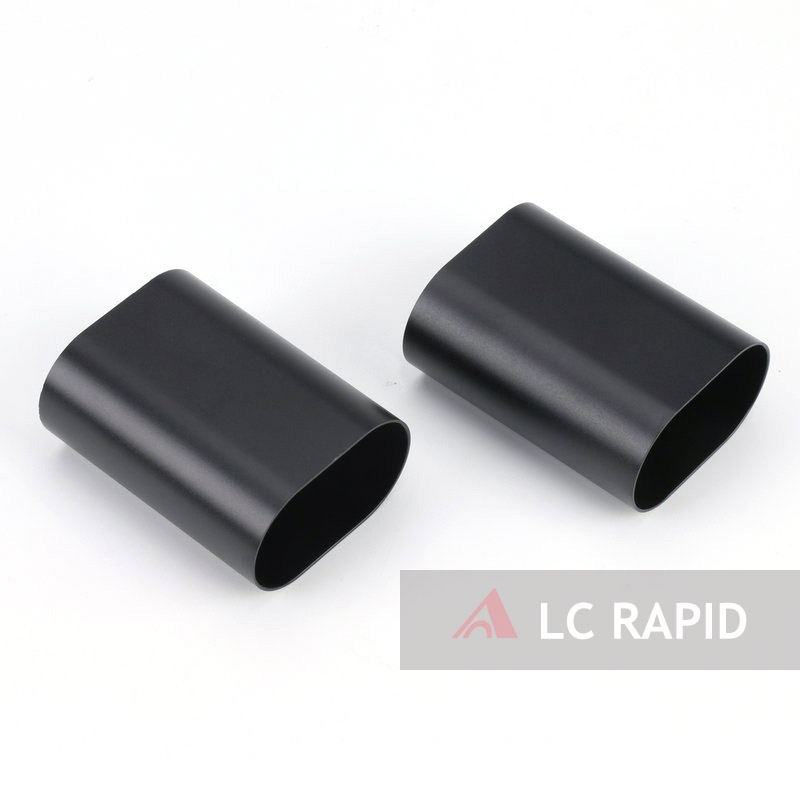+86-18898486814
sales@lcrapid.com
Die casting is a metal casting process characterized by the use of mold cavities to apply high pressure to molten metal, which is similar to plastic injection molding. Die casting is especially suitable for manufacturing a large number of small and medium-sized castings, so it is one of the most widely used method in various casting processes. Compared with other casting technologies, die casting has a smoother surface and higher dimensional consistency. However, nonstandard operations and parameters can also produce many kinds of defects.
I. Flow marks and patterns
Appearance inspection:
On the surface of the casting, there are streaks consistent with the flow direction of molten metal and non-directional lines which are obviously visible, different from the color of the metal matrix and with no development trend.
The causes of flow marks are as follows:
1) The mold temperature is too low;
2) unreasonable runner design and improper flow gate location;
3) the material temperature is too low;
4) the filling speed is low and the filling time is short;
5) the gating system is unreasonable;
6) the exhaust is terrible;
7) the spray is unreasonable.
II. Reticular hair (fracturing cracks)
Appearance inspection:
On the surface of the die casting, there are concavo-convex traces like reticular hair, which will expand and extend with the increase of die casting times.
The causes are as follows:
1) There are cracks on the surface of die-casting mold cavity;
2) The preheating of die-casting mold is not even.

III. Cold shut
Appearance inspection:
There are obvious, irregular and sunken linear lines (penetrating and non-penetrating) on the surface of the die casting parts. The shape of the lines is small and long, sometimes the joint edge is smooth, and it may be broken under the action of external force.
The causes are as follows:
1) Two metal streams are connected with each other, but they are not completely fused and there are no inclusions between them, and the bonding force of the two metals is very weak;
2) The pouring temperature or the temperature of the die-casting mold is low;
3) The position of the runner is incorrect or the flow path is too long;
4) The filling speed is low.
IV. Shrinkage depression (dent)
Appearance inspection:
There are smooth dents (look like disks) on the surface of thick and large parts of the die-casting parts .
The causes are as follows:
1) Due to the shrinkage, the design of die casting is improper and the wall thickness difference is too large; The position of runner is improper; The injection specific pressure is low and the holding time is short; The local temperature of die-casting mould is too high.
2) The design of cooling system is unreasonable;
3) The mold opening is too early;
4) The pouring temperature is too high.
V. Moulage
Appearance inspection:
The traces left by the contact between the surface of the casting and the surface of the die-casting mold or the ladder traces occur on the surface of the casting.
The causes are as follows:
1) The end face of the ejector rod is worn by the ejection of elements; The length adjustment of ejector rob is inconsistent; The splicing parts of die casting cavity do not fit well with other parts .
2) The splicing part is loose due to joint or movable parts; The movable parts become loose or frayed; The side wall surface of the casting is formed by the inserts of the moving die and the fixed die interpenetrating with each other.
VI. Trace of adhesive substances
Appearance inspection:
Small flaky metal or nonmetal fuses with the matrix of the metal, and under the action of external force, the flaky material will be exfoliated, after that the surface of the casting will appear either shiny or dark gray.
The causes are as follows:
1) There are metal or non-metallic residues on the surface of die-casting mold cavity;
2) impurities are brought in and attached to the mold cavity surface during pouring of the pressure die casting process.
VII. Delamination (bark pocket and exfoliation)
Appearance inspection or damage inspection:
There is obvious metal hierarchy on the local part of the casting.
The causes are as follows:
1) The rigidity of the mold is not enough, and the template vibrates during the filling process of molten metal;
2) The stick-alip phenomenon of punch during the injection process;
3) The runner system is not designed properly.
VIII. Friction and ablation
Appearance inspection:
Rough surfaces occur on the die casting at some positions.
The causes are as follows:
1) The improper location, direction and shape of the runner caused by die casting;
2) Due to casting conditions, the cooling of the part with severe molten metal scouring at the runner is not enough.
IX. Erosion
Appearance inspection:
There is mottling or convex lines in local parts of the die casting.
The causes are as follows:
1) The improper setting of runner position;
2) The cooling condition is not good.
X. Cracks
Appearance inspection:
When the casting is placed in alkaline solution, the cracks appear dark gray. The breaking and cracking of metal matrix are in a linear or wavy shape, and the grain is narrow and long, which has a development trend under the action of external force.
The causes are as follows:
1) The content of iron or silicon in the alloy is too high or too low; the content of harmful impurities in the alloy is too high, which reduces the plasticity of the alloy; the content of zinc or copper in aluminum silicon alloy and aluminum silicon copper alloy is too high; the magnesium content in aluminum magnesium alloy is too high;
2) The mold retention time and the pressure maintaining time are short; there are dramatic changes in the casting wall thickness;
3) The local holding force is too large, and the force is uneven during ejection.